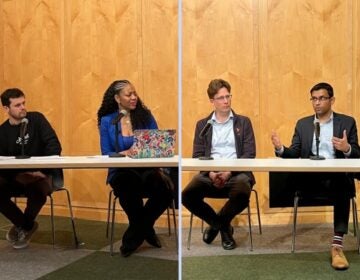Fighting heart disease with algorithms
There’s a lot of data out there on the genetic roots of heart disease. The National Institutes of Health have poured billions of dollars into research, the data from which must be made public.
But big haystacks are hard to work with.
You may come across a few big needles, but smaller stuff that’s still important often remains buried.
That’s the problem a team of medical researchers at the University of Pennsylvania and the University of Massachusetts Amherst is aiming to fix.
Muredach Reilly of UPenn and Andrea Foulkes of UMass have developed MixMAP, or “Mixed modeling of Meta-Analysis P-values.” Their work was published in the latest edition of medical journal PLOS ONE.
“It’s a way of digging deeper into existing data,” explained Reilly. “We have this statistical program, this software, that we think can tell us more than the initial analysis showed.”
The program makes use of existing NIH databases to identify and group similar signals along the human genome. By clustering nearby signals, the algorithmic software can help researchers reveal new information.
Here’s further explanation from a UMass press release:
While [the] traditional statistical method looks for one unusual “needle in a haystack” as a possible disease signal, Foulkes and colleagues’ new method uses knowledge of DNA regions in the genome that are likely to contain several genetic signals for disease variation clumped together in one region. Thus, it is able to detect groups of unusual variants rather than just single SNPs, offering a way to “call out” gene regions that have a consistent signal above normal variation.
“When we look at all the signals together,” said Reilly, “we can see the clusters of the genes and the pathways, suggesting that this cholesterol pathway [or] this blood pressure pathway is really important for heart disease.”
The new approach to data analysis could help researchers develop new treatments or find better ways to identify people at risk of developing heart disease.
The software is freely available to the research community.
WHYY is your source for fact-based, in-depth journalism and information. As a nonprofit organization, we rely on financial support from readers like you. Please give today.




